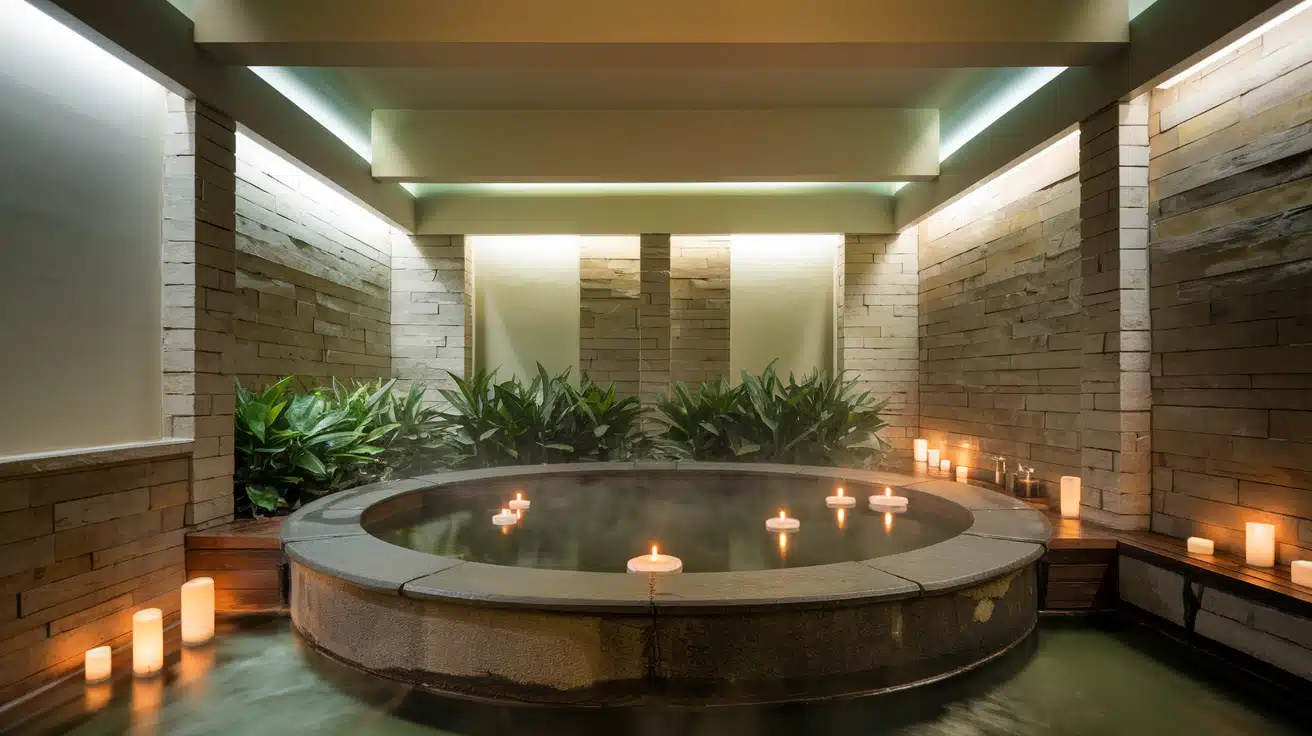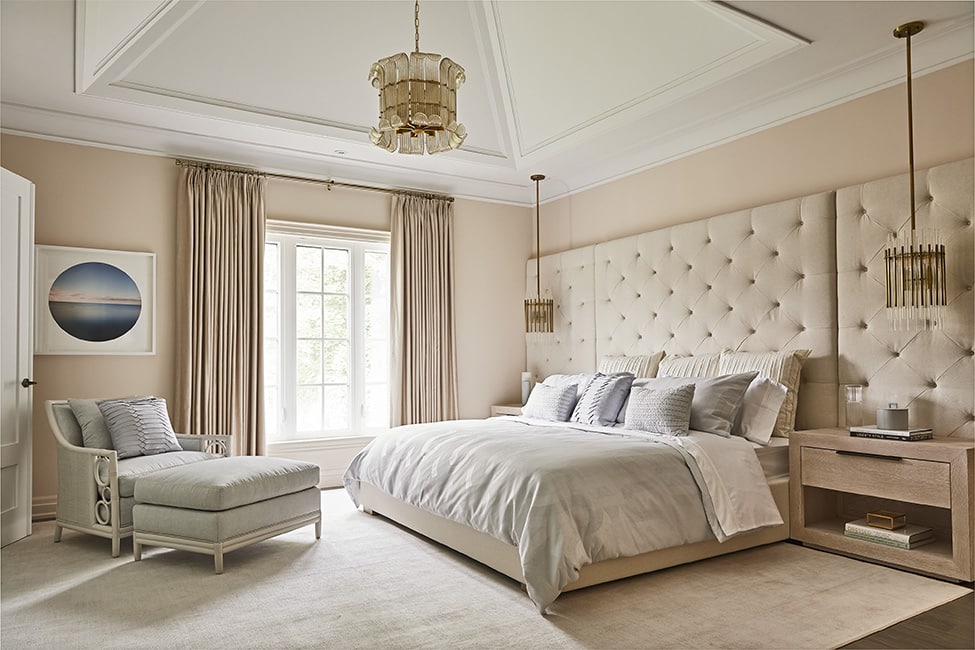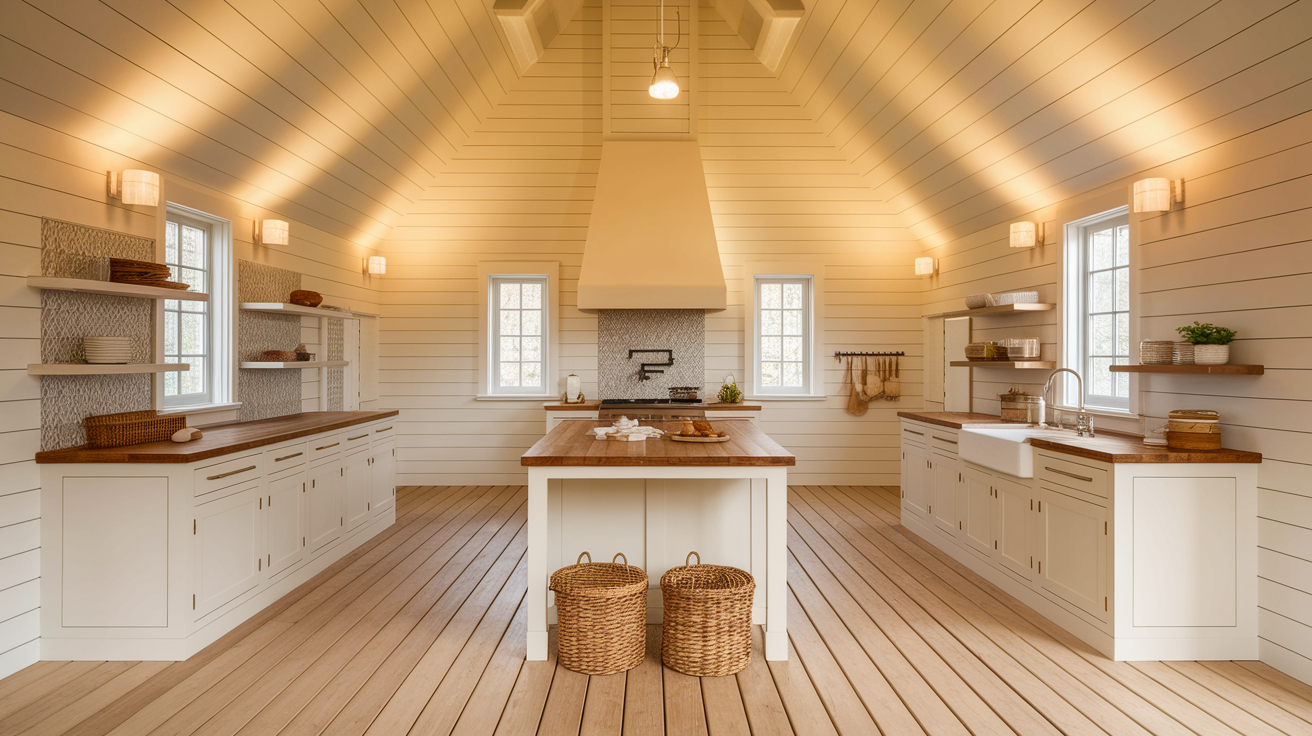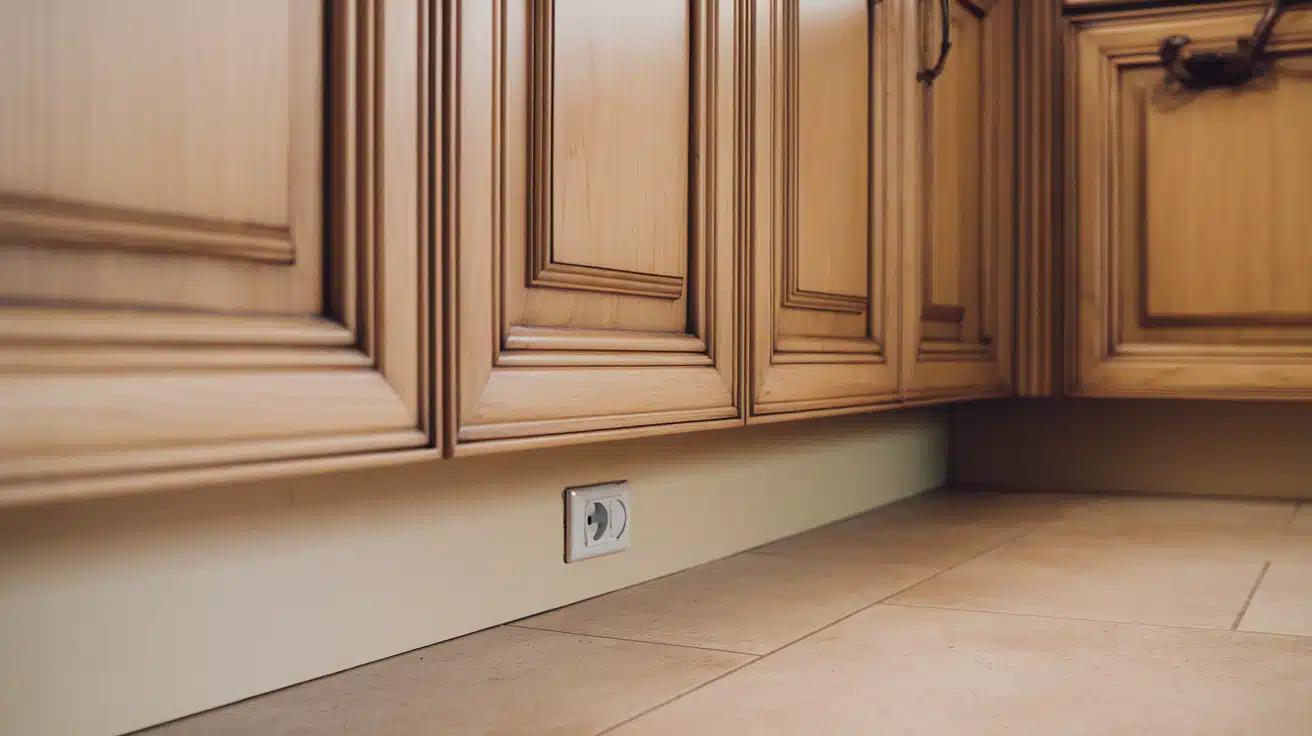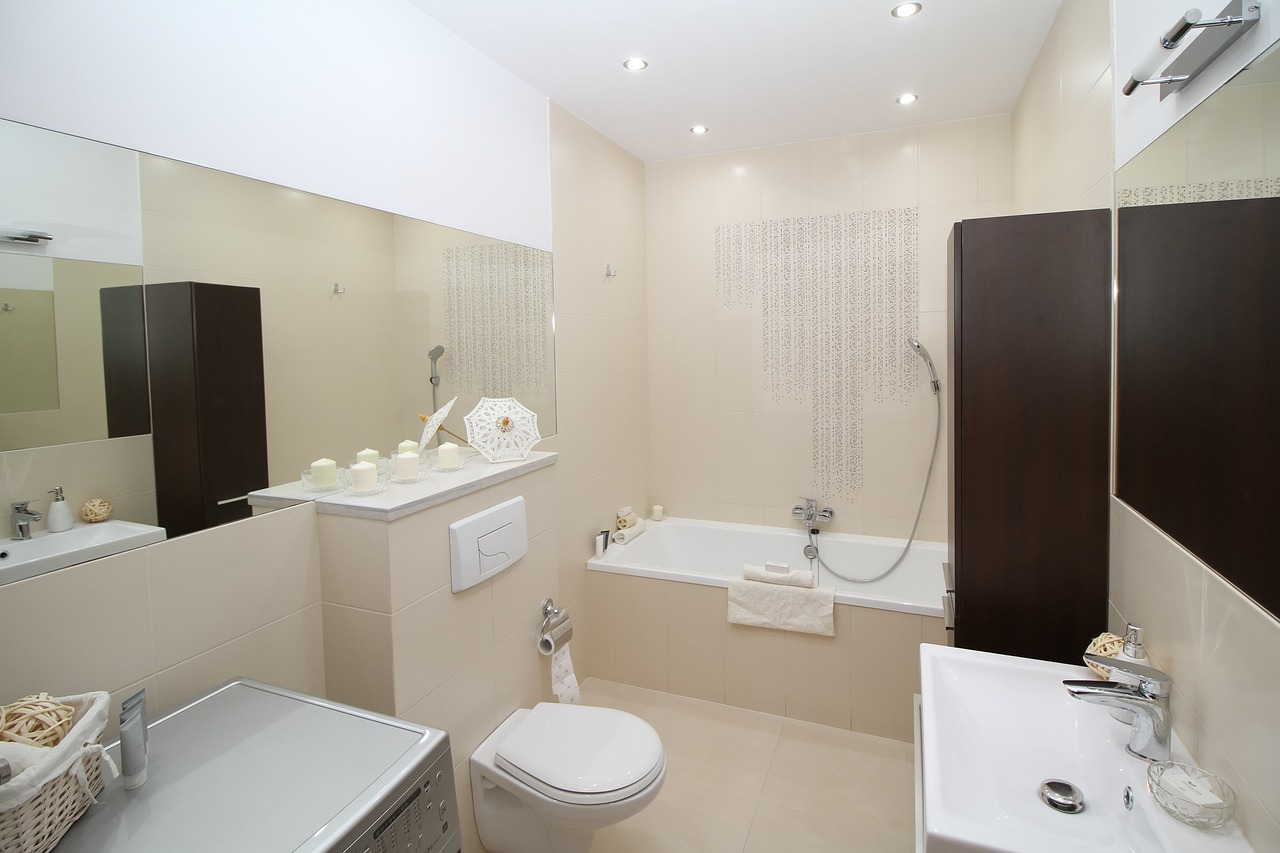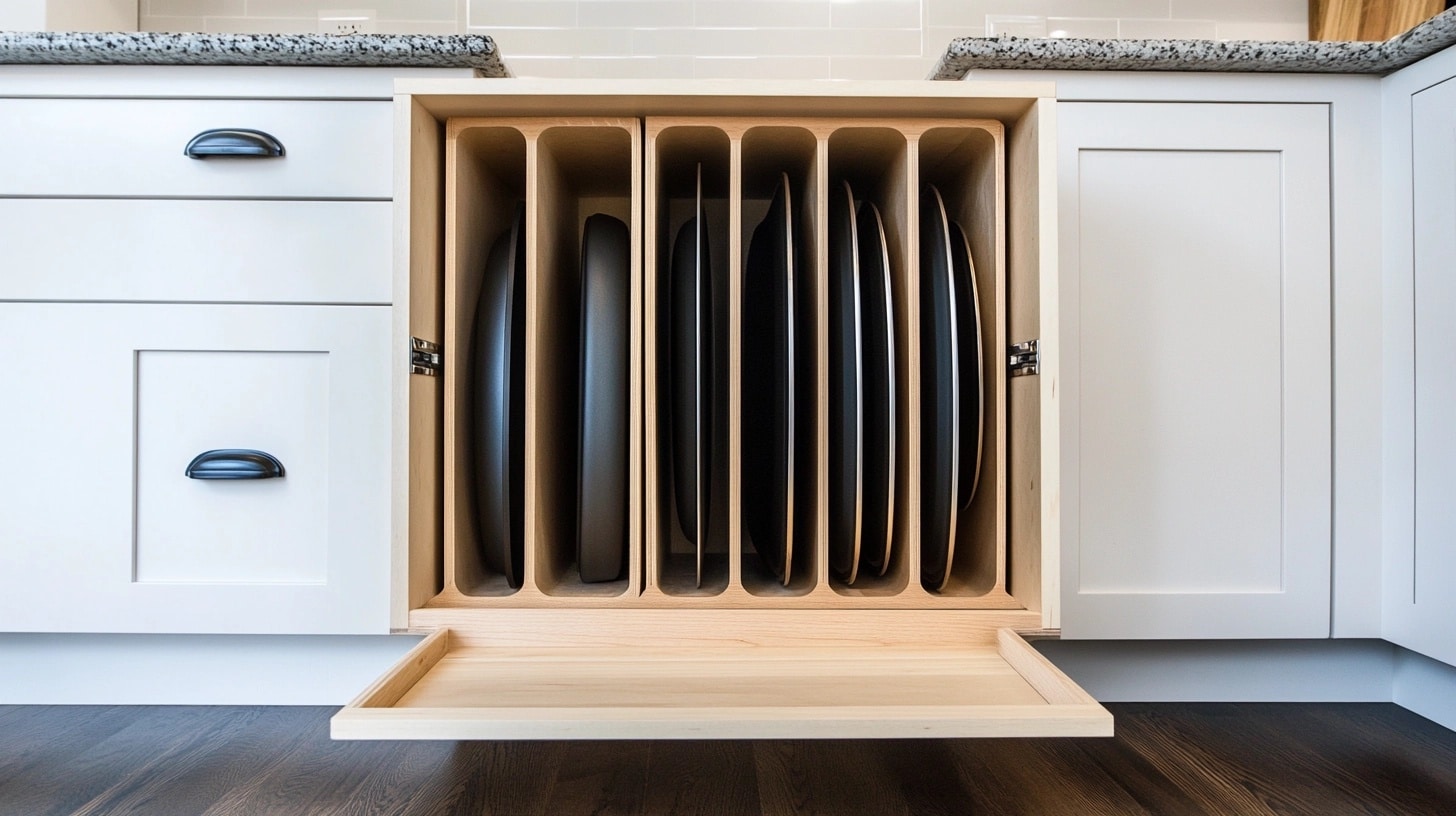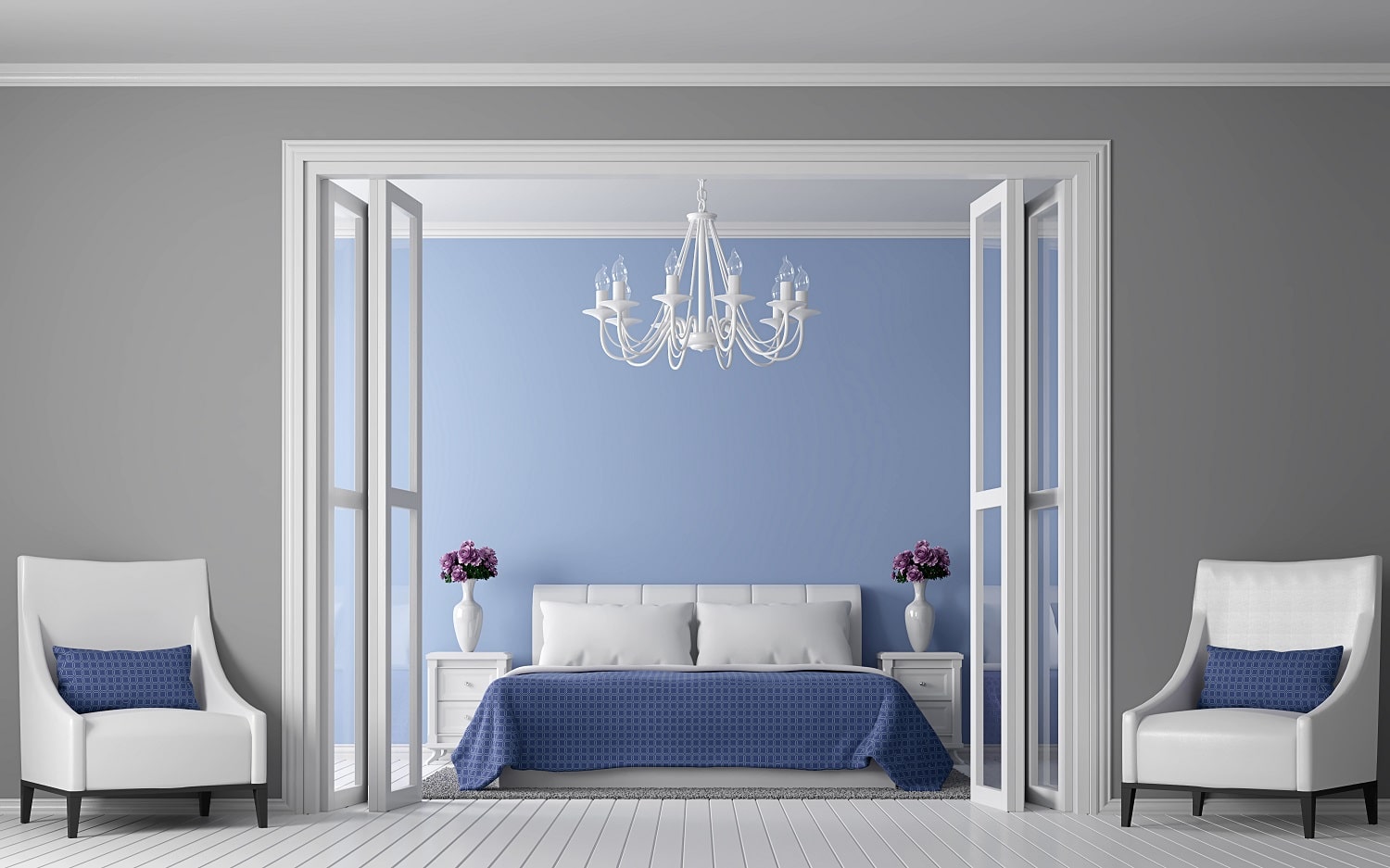11 Spa Design Ideas to Bring Your Vision to Life
When clients walk into a spa, they’re not just looking for a service—they’re seeking an experience.
The way your spa looks and feels can make all the difference between a one-time visit and a loyal customer.
A well-designed spa space speaks directly to the senses, creating an instant feeling of calm that helps clients leave their stress at the door.
Research shows that thoughtful spa design directly impacts business success. Spaces that make clients feel comfortable lead to better reviews, more referrals, and increased bookings.
This guide finds 11 practical spa design ideas that can convert any space into a unique spot for complete relaxation.
From simple color choices to advanced sensory elements, these approaches help create the perfect setting for relaxation and renewal.
Why Good Spa Design Matters
Good spa design is more than just making a space look nice—it’s about creating an atmosphere that works on many levels.
When you get your spa design right, the benefits extend to everyone who enters the space.
Impact on Client Relaxation
Clients come to spas to relax and escape from their daily stress. The right design helps them switch off from the moment they enter.
Calm spaces with soft textures, gentle sounds, and mild scents signal to the brain that it’s time to unwind.
Research shows people respond to their surroundings at both conscious and subconscious levels.
A well-designed spa helps clients feel safe, comfortable, and ready to enjoy their treatments fully.
Effect on Staff Productivity
Your spa design affects your team, too. Staff who work in pleasant, thoughtfully designed spaces tend to be happier and more focused.
A workspace that feels good reduces mental fatigue and helps prevent burnout.
When treatment rooms are properly laid out with everything within reach, therapists can work more smoothly and give better care to clients.
Good design also makes cleaning and maintaining the space easier, saving time and effort.
Business Growth Benefits
Smart spa design directly impacts your bottom line. An inviting space attracts new clients and encourages existing ones to return.
When people feel good in your spa, they’re more likely to book again, spend more time (and money) there, and tell friends about their experience.
Good design also creates great photo opportunities for your social media and marketing materials, helping you stand out from competitors.
Essential Spa Design Ideas
Several key design elements are required to create a truly relaxing spa environment. These foundational ideas can transform even the most basic space into a calming space.
1. Calm Color Choices
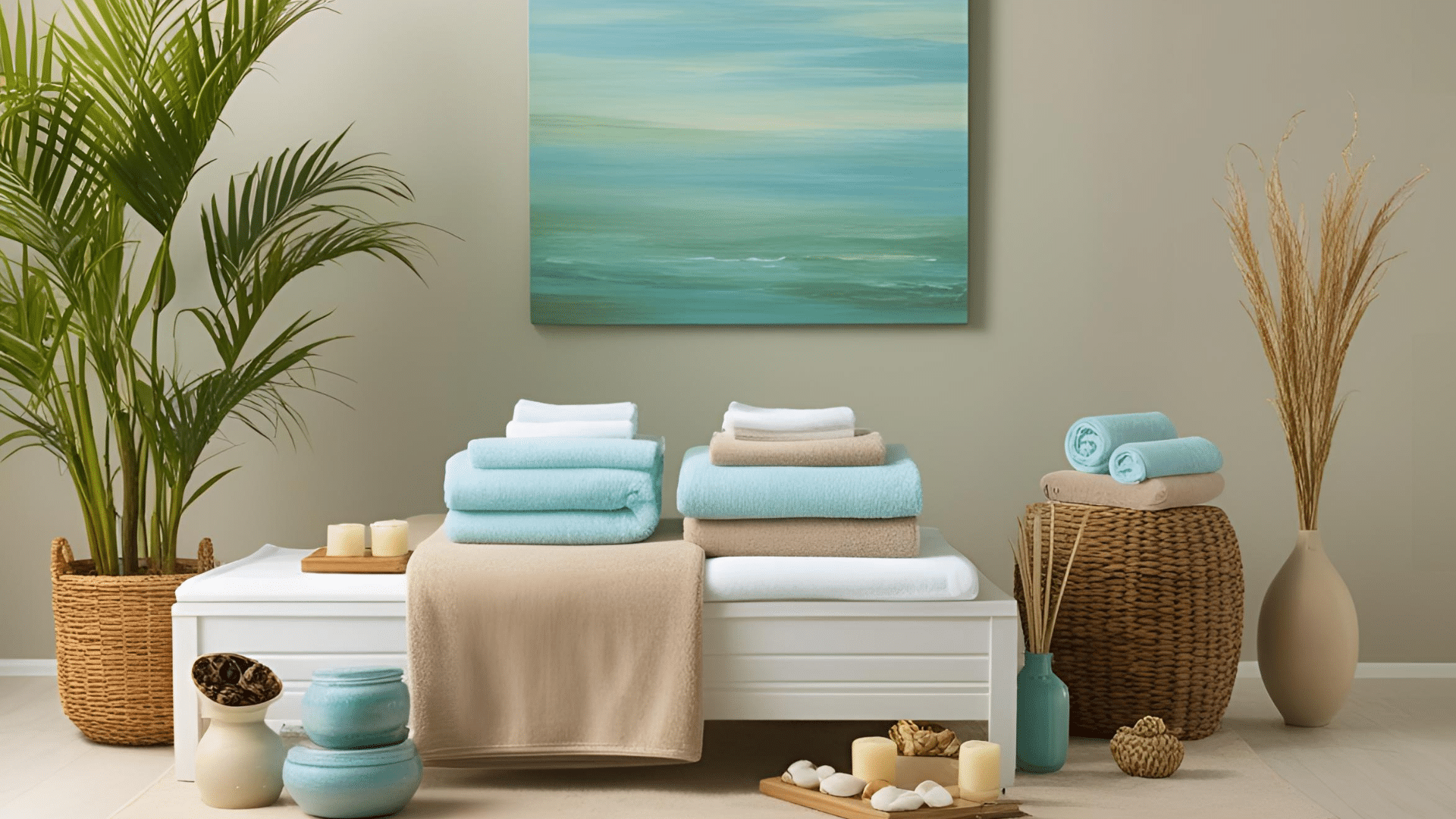
Colors set the mood in your spa. Soft, muted tones work best for creating a peaceful feeling.
Light blues and greens remind people of nature and help lower blood pressure and heart rate.
Warm beiges, soft grays, and gentle earth tones make rooms feel cozy and safe.
Keep your color scheme simple—too many different colors can make a space feel busy and prevent mental rest.
Paint walls in neutral shades and add small touches of color through easily changed items, like towels or small decorations.
2. Natural Materials
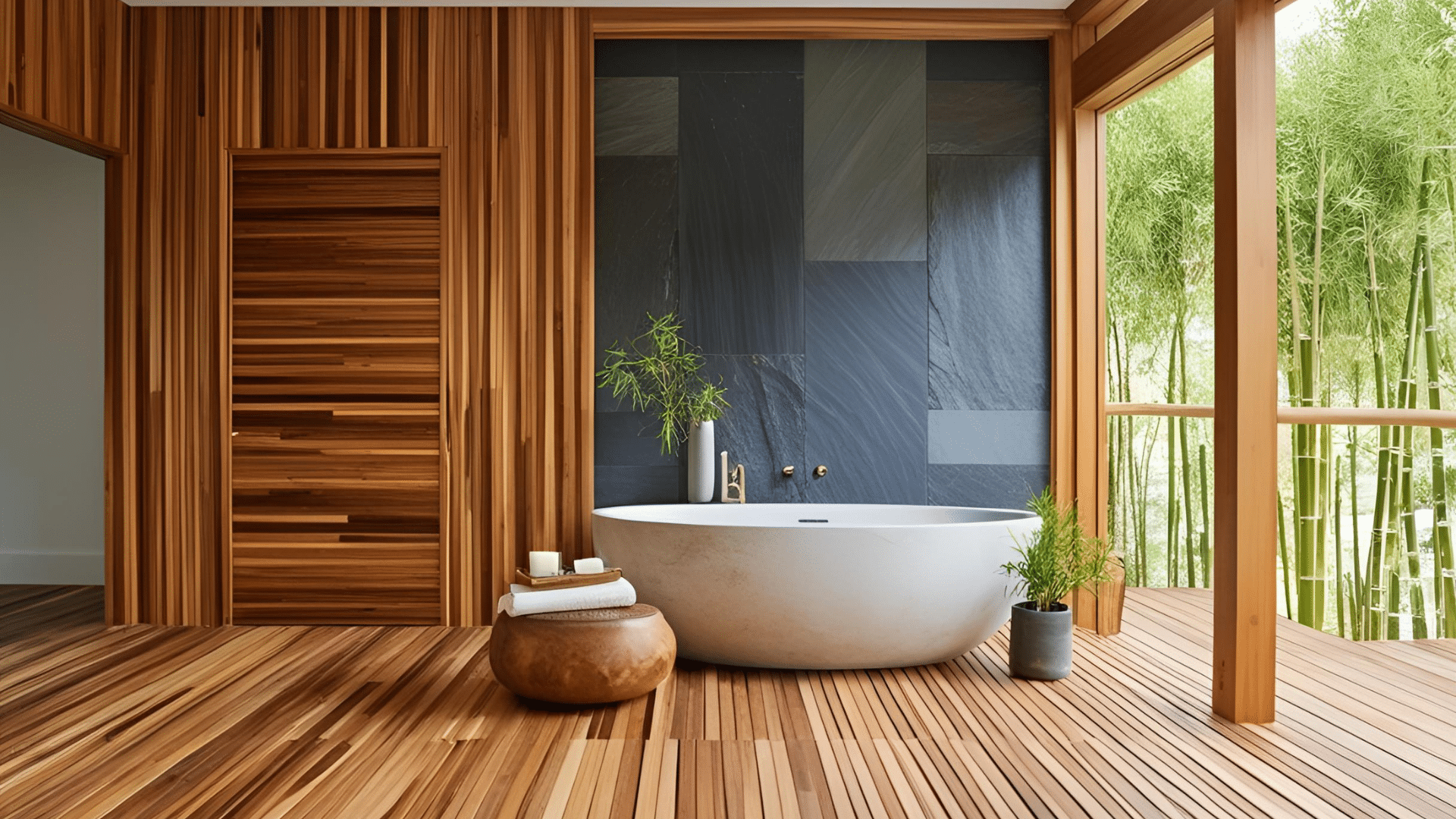
Using natural materials connects people to the outdoors, which helps with stress relief. Wood brings warmth and an organic feel to floors, walls, and furniture.
Stone elements like slate or marble add texture and a sense of stability. Bamboo is not only sustainable but also adds a light, natural touch to spaces.
These materials feel good to touch and create a more authentic environment than plastic or highly processed materials.
They also age well, developing character over time rather than looking worn.
3. Indoor Plants and Greenery
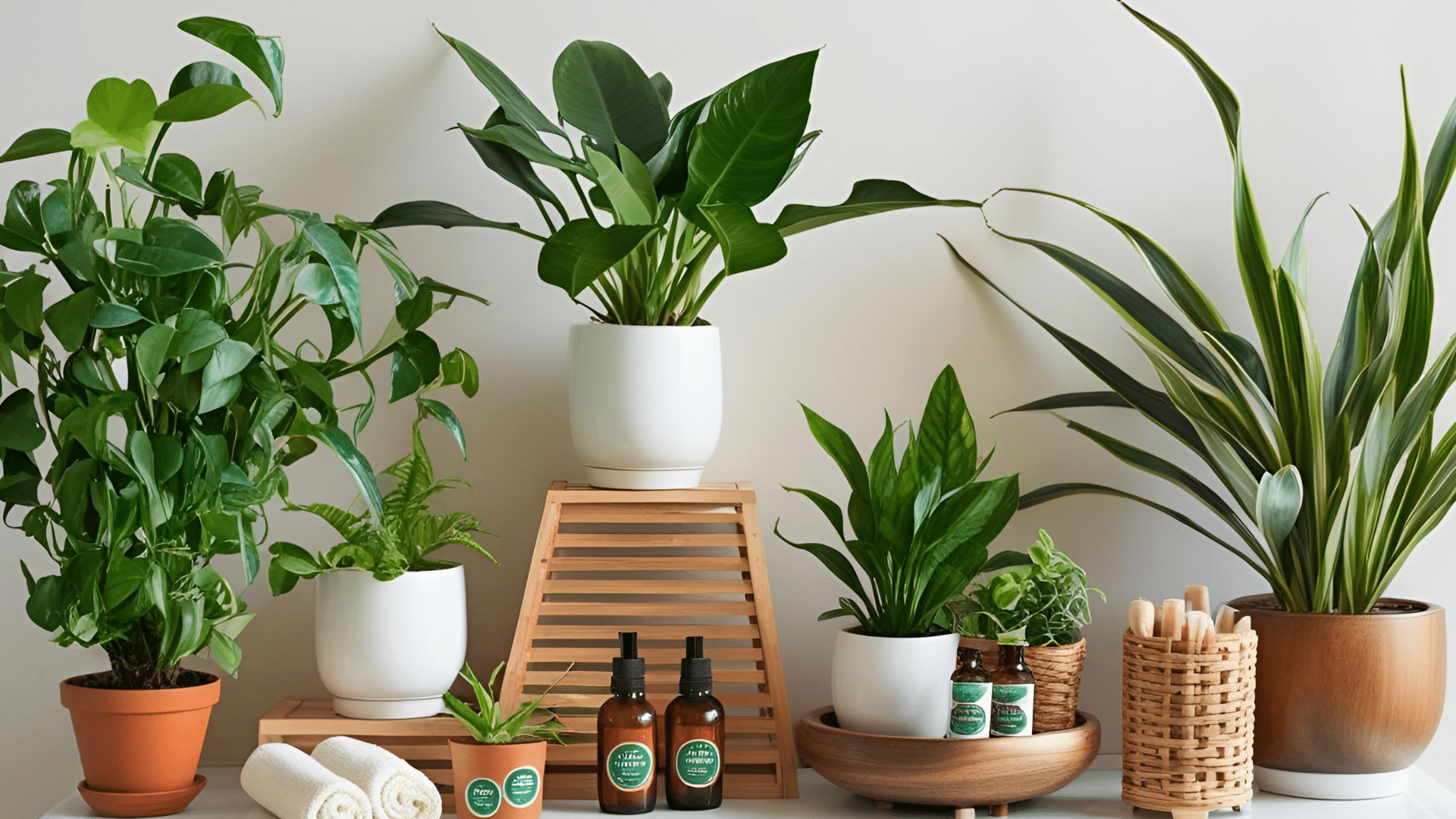
Adding living plants to your spa brings many benefits. Plants clean the air by removing toxins and adding oxygen.
They add life and natural beauty to any space. Even small plants on shelves or counters make a difference.
For low-maintenance options, try snake plants, pothos, or ZZ plants that thrive in indoor conditions with minimal care.
Larger plants, such as palm trees or birds of paradise, create focal points and help divide spaces. If your spa has limited natural light, consider high-quality silk plants as an alternative.
4. Soft Lighting Options
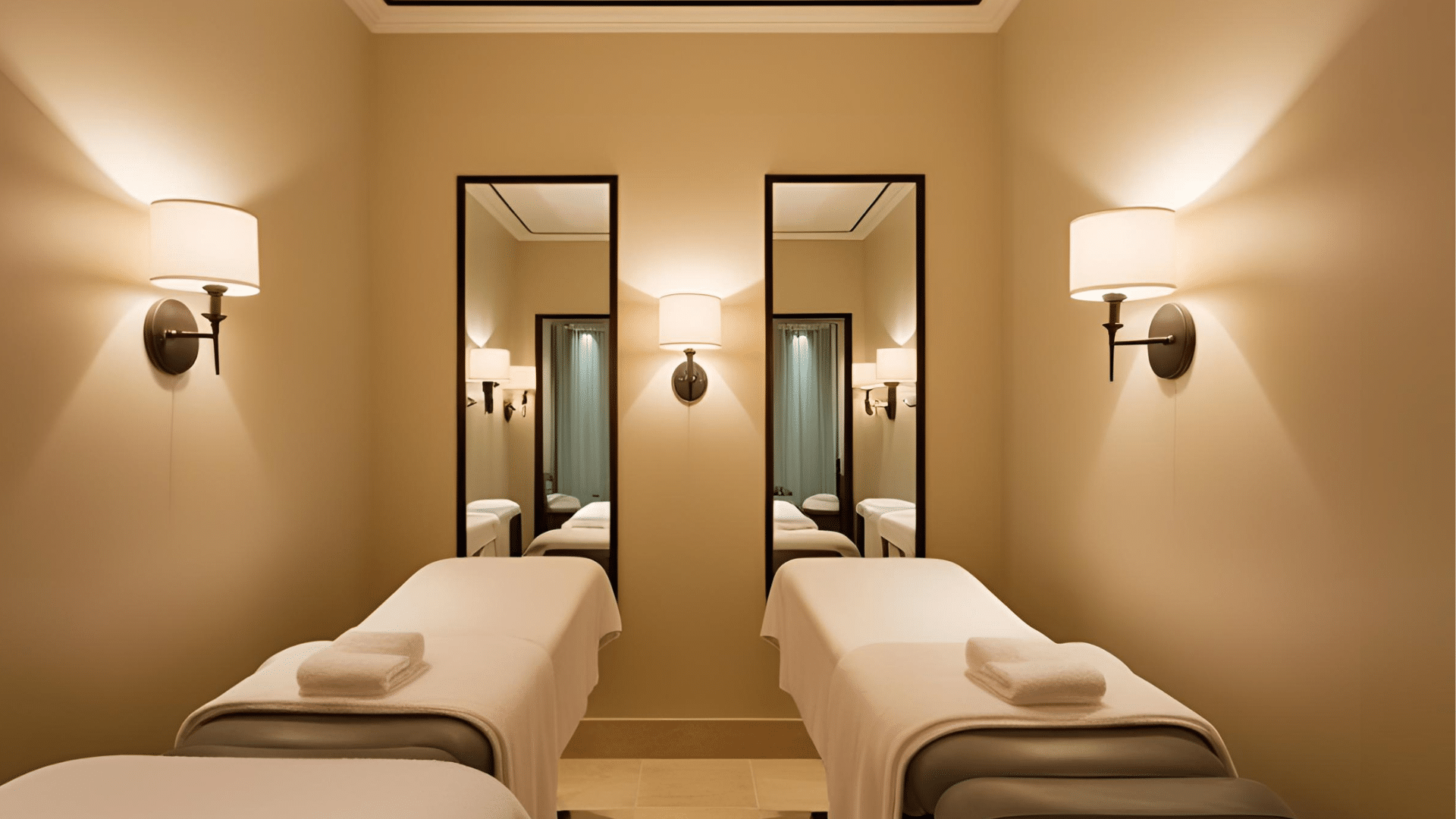
Harsh lighting is unsuitable for a spa. Instead, aim for soft, layered lighting that creates a warm glow.
Use dimmers on overhead lights to adjust brightness throughout the day. Wall sconces at eye level create a flattering, soft light that makes everyone look their best.
LED candles offer safe, flickering light without fire hazards or smoke.
For treatment rooms, make sure the lighting can be adjusted according to the service—brighter for detailed work like facials and softer for massage.
5. Water Features
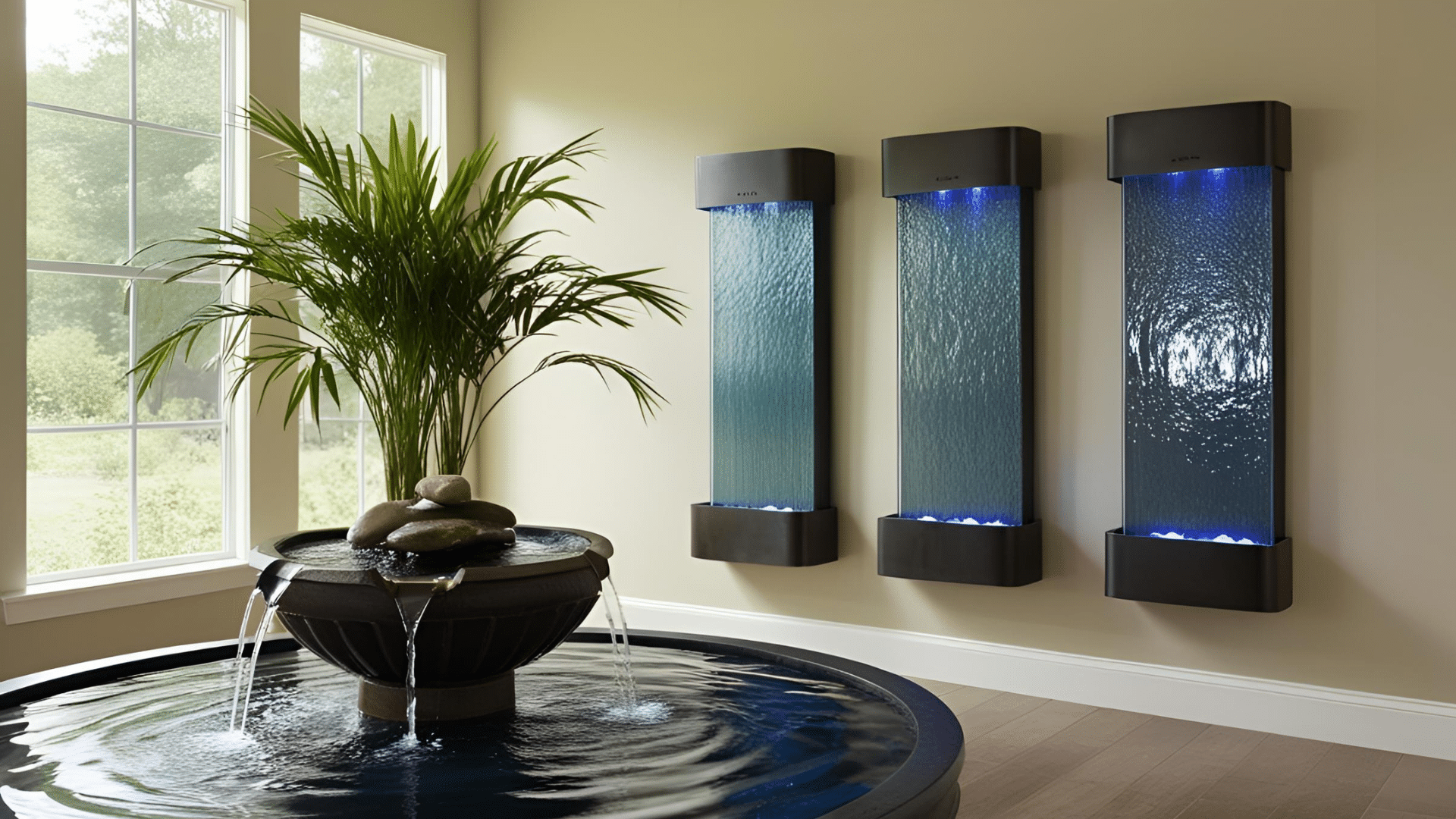
The sound of moving water helps mask background noise and creates instant calm.
Even small water features like tabletop fountains can make a big difference.
Wall-mounted water panels add visual interest while creating soothing sounds.
For larger spaces, consider a small indoor waterfall or a bubbling rock feature in the waiting area.
If plumbing or maintenance concerns make actual water features difficult, sound machines that mimic rainfall or streams can provide similar benefits.
6. Scent Selection
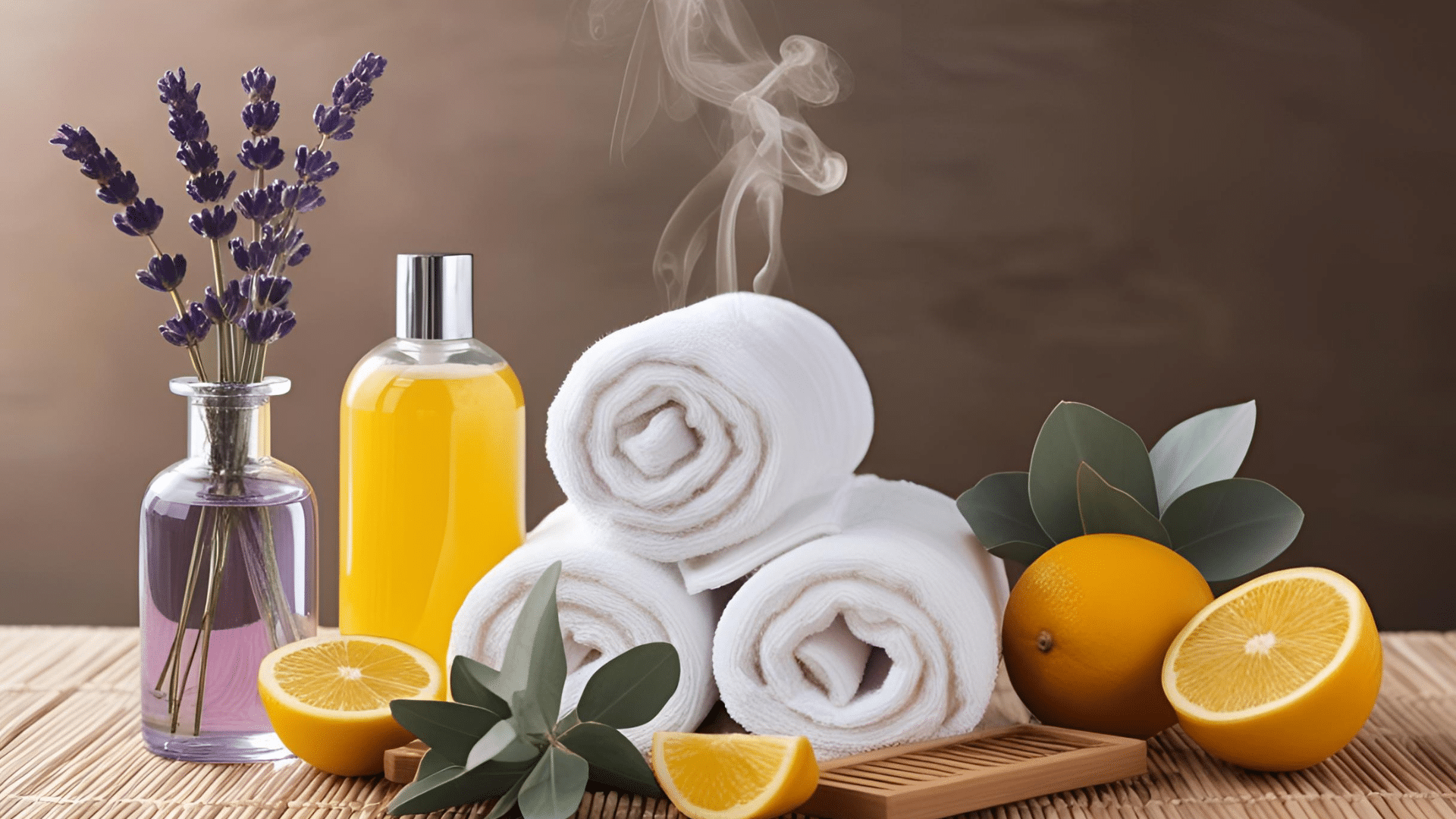
Smell connects directly to the brain’s emotion centers, making it a powerful tool in spa design.
Lavender promotes relaxation, while citrus scents can energize and uplift. Eucalyptus helps clear airways and creates a clean feeling.
Whatever scents you choose, keep them subtle—strong smells can cause headaches or nausea in some clients.
Use high-quality essential oils rather than artificial fragrances, and change scents seasonally to keep the experience fresh. Consider offering scent-free options for sensitive clients.
7. Simple, Clean Layouts
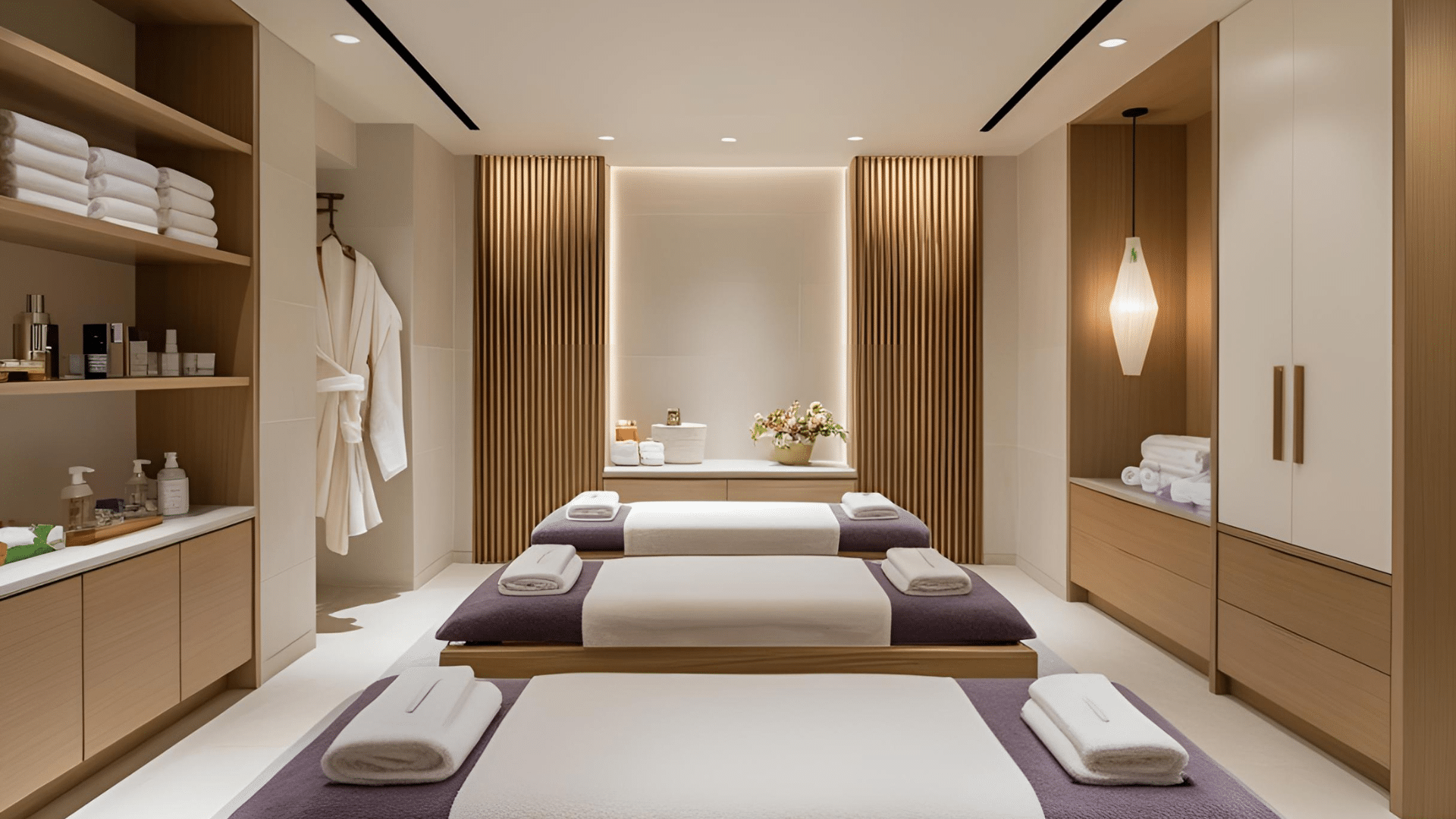
A cluttered spa creates an untidy mind. Keep your design simple and your spaces open.
Create clear pathways so people can move easily between areas. Hide necessary supplies in cabinets rather than leaving them out.
Each room should have a clear purpose without extra furniture or decorations.
This minimal approach not only looks better but also makes cleaning easier and helps clients focus on relaxation rather than visual distractions.
Next-Level Spa Design Ideas
Once you’ve mastered the basics of spa design, try these advanced ideas. They create truly special experiences for your clients.
8. Custom Treatment Rooms
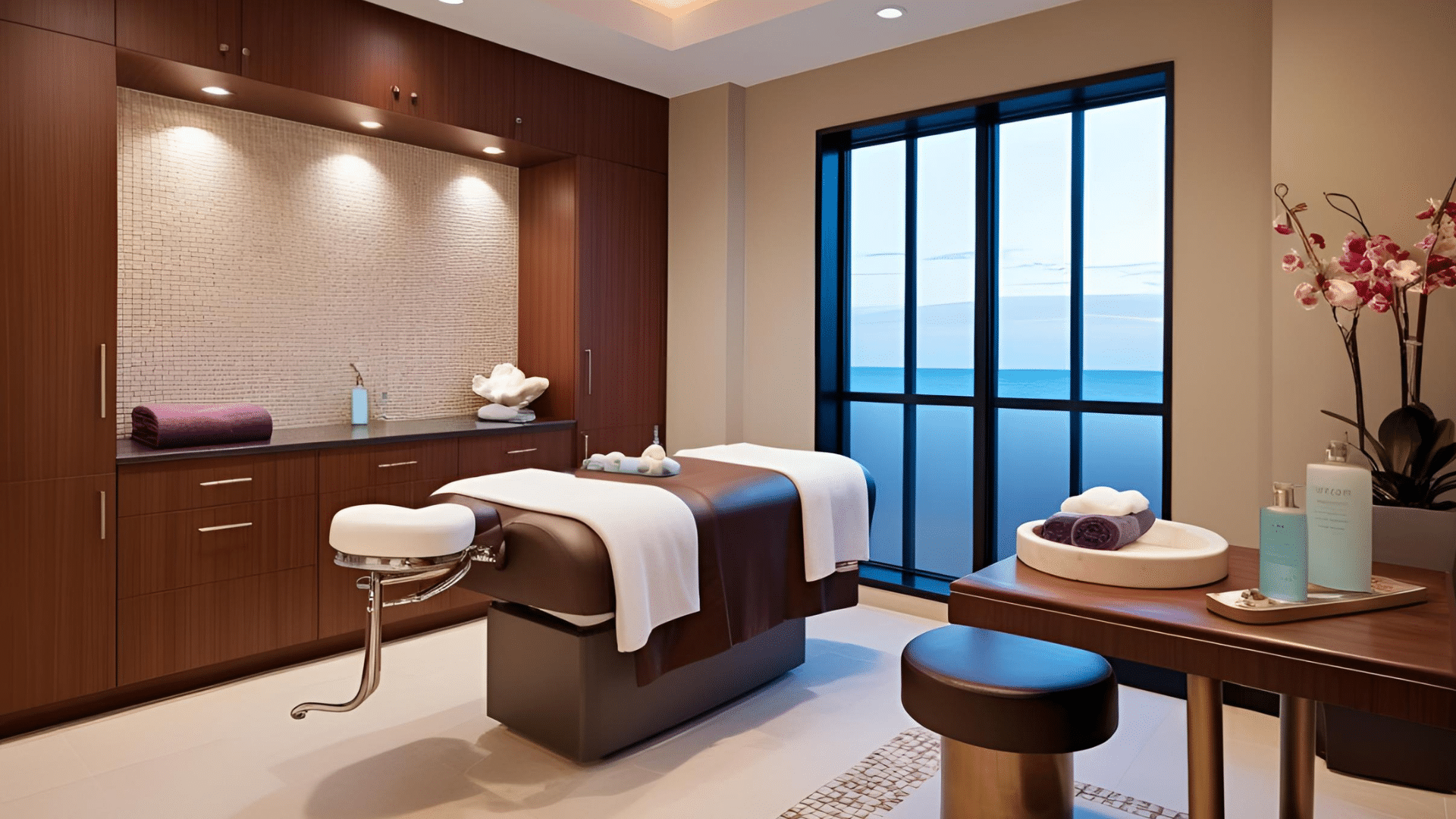
Take your spa beyond basic with rooms that can be changed. Add adjustable features for different clients and services.
Include lighting with color options. Install easy temperature controls. Use furniture that moves. Some spas now give clients control panels.
Clients can change their music, temperature, or lighting. This personal touch makes each visit feel special, and clients enjoy a custom experience instead of the same service everyone gets.
9. Sound System Planning

Sound affects how people feel. Pay close attention to your audio setup, buy a good sound system, and make sure the music plays evenly in all areas.
Avoid spots that are too quiet or too loud. Install separate volume controls in different rooms. What works at the front desk might not work for massage rooms.
Some spas use special speakers that focus sound in specific spots. Research shows that slower music helps people relax, so choose your playlists with care.
10. Sensory Experiences
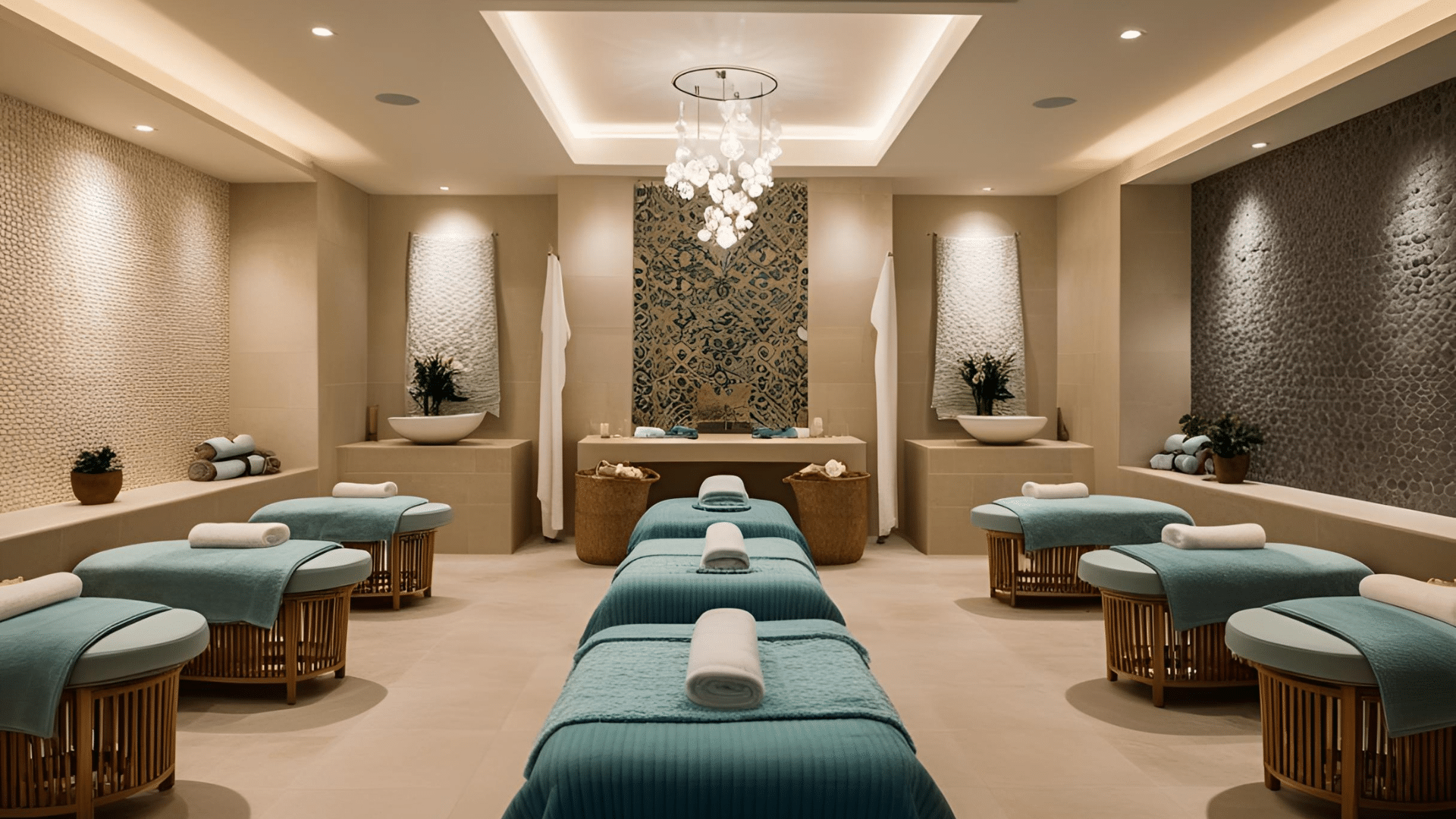
Great spa design works with all five senses. Think beyond the basics, add different textures, play with temperature, and include gentle movement.
Try heated floors in changing rooms. Offer cool towels in summer. Use weighted blankets during treatments.
Some spas project soft lights on ceilings. This gives clients something calm to watch.
Others add gentle vibrations to chairs. These extra touches create a full experience. Standard spas don’t offer these special details.
11. Theme-Based Design
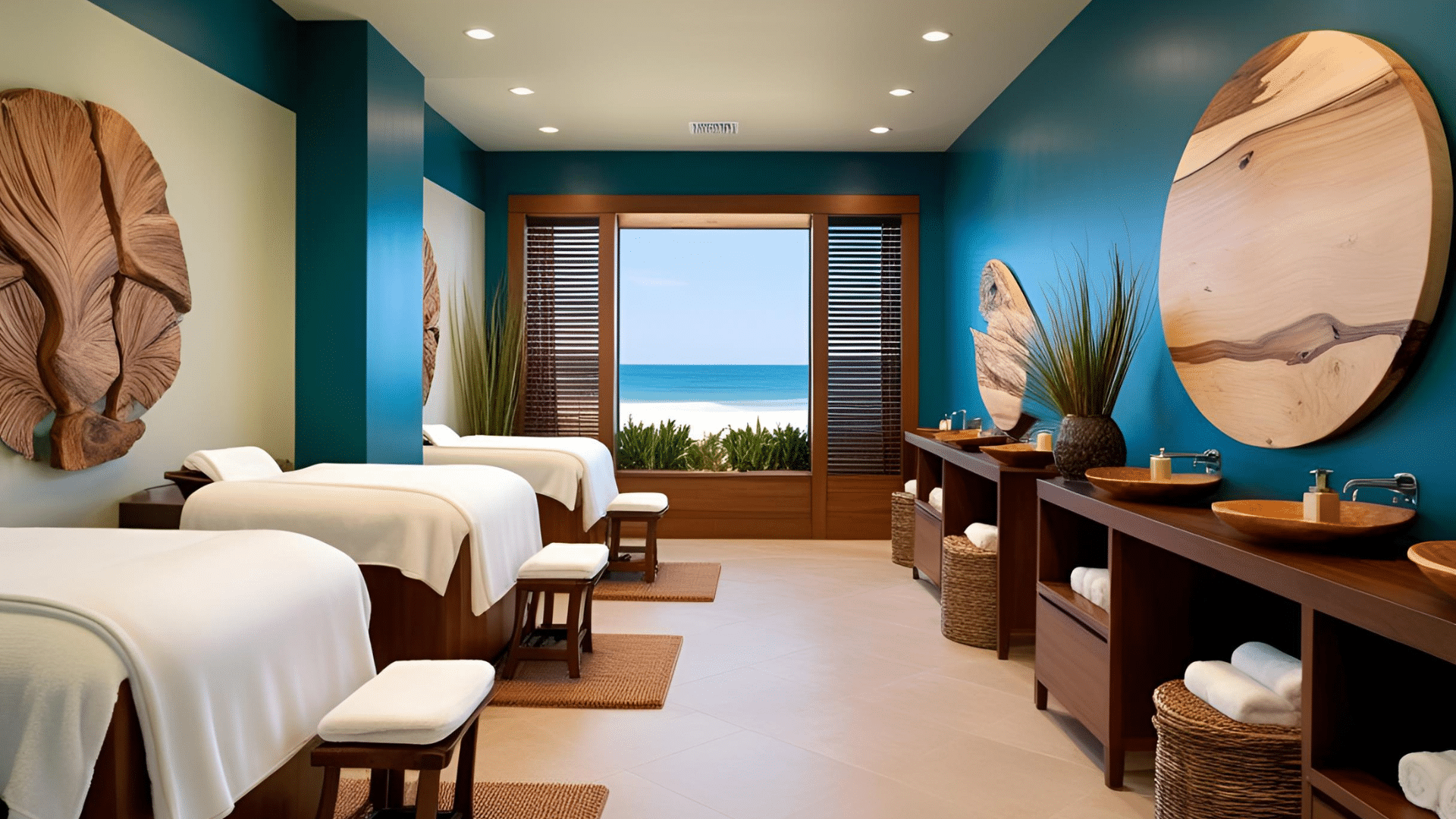
A clear theme makes your spa stand out and creates a complete escape for clients. Don’t mix too many different styles.
A theme connects all your design choices. A nature theme might use forest sounds, wood elements, and earthy scents.
An ocean theme could have blue colors and water sounds. Cultural themes work well, too. Japanese style offers clean lines.
Moroccan design brings rich colors and patterns. A good theme feels natural, not forced.
How to Choose the Right Spa Design
Picking the best design for your spa requires careful planning. Here’s what to consider.
Matching Design to Your Brand
Know your spa’s identity first. Your design should reflect your business values. Luxury spas need rich textures, while natural healing spas should use earth tones.
Think about your client type. Your space tells your business story. Make it match your logo and website. This builds a clear brand.
Making Spaces Work Well
Put function before beauty. Map how people move through your spa and ensure smooth paths from entry to treatment.Provide enough seating in waiting areas.
Don’t forget storage space. Staff need easy access to supplies, so plan where dirty towels go.
Test your layout by walking the client’s path. Fix any awkward spots.
Staying Within Budget
Good design doesn’t need to cost much. Set spending limits early.
Focus on areas clients see most. Use paint instead of costly wall coverings.
Find quality used furniture. Add plants for a big impact at a low cost. Shop sales for décor. Good lighting changes spaces without major work.
When money is tight, update in phases.
Turning Your Spa Vision into Reality
Creating a spa that reflects comfort and relaxation requires careful planning.
From working with skilled professionals to selecting durable materials, each step ensures a space that is both inviting and practical.
Working with Designers
Collaborating with an experienced designer helps bring your vision to reality while ensuring functionality.
A knowledgeable professional will consider space usage, lighting, and layout to create a balanced environment.
Clear communication about your goals and preferences provides a smooth process and results that align with your expectations.
Finding Quality Materials
The right materials contribute to your spa’s longevity and comfort.
Opt for water-resistant flooring, non-slip surfaces, and durable fixtures that withstand humidity and frequent use.
Natural stone, high-quality tiles, and treated wood are popular choices for their strength and ability to maintain their look over time.
For example, porcelain tiles offer durability and moisture resistance while requiring minimal maintenance, making them a cost-effective and stylish choice.
Maintenance Considerations
Regular upkeep is essential to keeping your spa in top condition. Choose materials and finishes that are easy to clean and maintain.
Ventilation systems should be efficient in managing moisture and preventing mold and mildew buildup.
Establishing a cleaning schedule and using appropriate products will help preserve the space and extend the life of the design elements.
Common Mistakes to Avoid
- Ignoring Long-Term Maintenance – Some features may look appealing but require extensive care. Opt for materials that balance aesthetics with practicality.
- Poor Ventilation – Inadequate airflow can lead to mold and mildew. Install efficient ventilation to control moisture levels.
- Choosing the Wrong Flooring – Slippery surfaces pose safety hazards. To prevent accidents, use non-slip tiles or treated wood.
- Insufficient Storage – A cluttered spa disrupts relaxation. Incorporate ample storage for towels, oils, and accessories.
- Improper Lighting – Harsh lighting can be uncomfortable. Use soft, ambient lighting to create a soothing atmosphere.
Conclusion
A well-designed spa goes beyond looks—it fosters relaxation, improves client satisfaction, and supports long-term business success.
Choosing the right materials, maintaining the space properly, and working with skilled professionals all contribute to an effective design.
Thoughtful planning ensures a balance between beauty and practicality, allowing your spa to serve as a true retreat.
By applying these principles, you can create a space that is both inviting and easy to maintain, making it a lasting asset for your business or personal use.

